This particular research trip set as one of its goals the evaluation of three lines of evidence with regard to identifying the locations of Sodom and Gomorrah and attempting to establish chronological timelines:
(1) Biblical evidence within the text of Scripture itself as the prima facie evidence; (2) archaeological evidence as provided in excavation reports; and, (3) geological evidence where applicable (e.g., looking for the presence of salt and sulfur in areas around potential sites for Sodom and Gomorrah).
As the authoritative written historical record, the Bible stands first among the possible evidences. It is always nice to discover extrabiblical evidence confirming the biblical record, but we don’t require such confirmation when it comes to God’s Word and its inerrancy. The careless summary recites the mantra, “God said it, I believe it, that settles it.” Actually, we should be saying, “God said it, that settles it — whether or not I believe it.” God’s truthfulness does not depend upon any human agreement or approval; His veracity stands on its own. Spina rightly recognizes the ultimate narrator’s attribute:
The omniscient narrator (Sternberg 1985: 84–128; Alter 1981: 155–77) after all has long since informed us that Sodom and Gomorrah would in fact be destroyed (Gen 13:10), something which is also already in God’s mind (Gen 18:17).
— Frank Anthony Spina, “Lot (Person),” ed. David Noel Freedman, The Anchor Yale Bible Dictionary (New York: Doubleday, 1992), 373
Lot’s Cave
Since Zoar currently remains off limits to most visitors, we could not begin our investigations there. According to Scripture God did not destroy Zoar along with the other cities of the well-watered plain where they were located. A second choice for commencing our research turned out to be the cave to which Lot and his daughters moved after escaping the catastrophic judgment of Sodom and Gomorrah (Genesis 19:1–30). Zoar’s earlier name was Bela (Genesis 14:2, 8) and its later name matches Suhru in the El Amarna letters. According to the Bible, Zoar was located in or near the Valley of Siddim (Genesis 14:3, 8, 10). Deuteronomy 34:1–3 mentions Zoar as the southernmost visible site from where Moses stood on Mt Nebo. Biblical evidence also points to Zoar’s location at an extreme boundary of Moab (Isaiah 15:5). It may be identified with es-Safi and its large oasis at the foot of the mountains of Moab. The Medeba Map (see below, and Post #5) places Zoar just southeast of the Dead Sea.
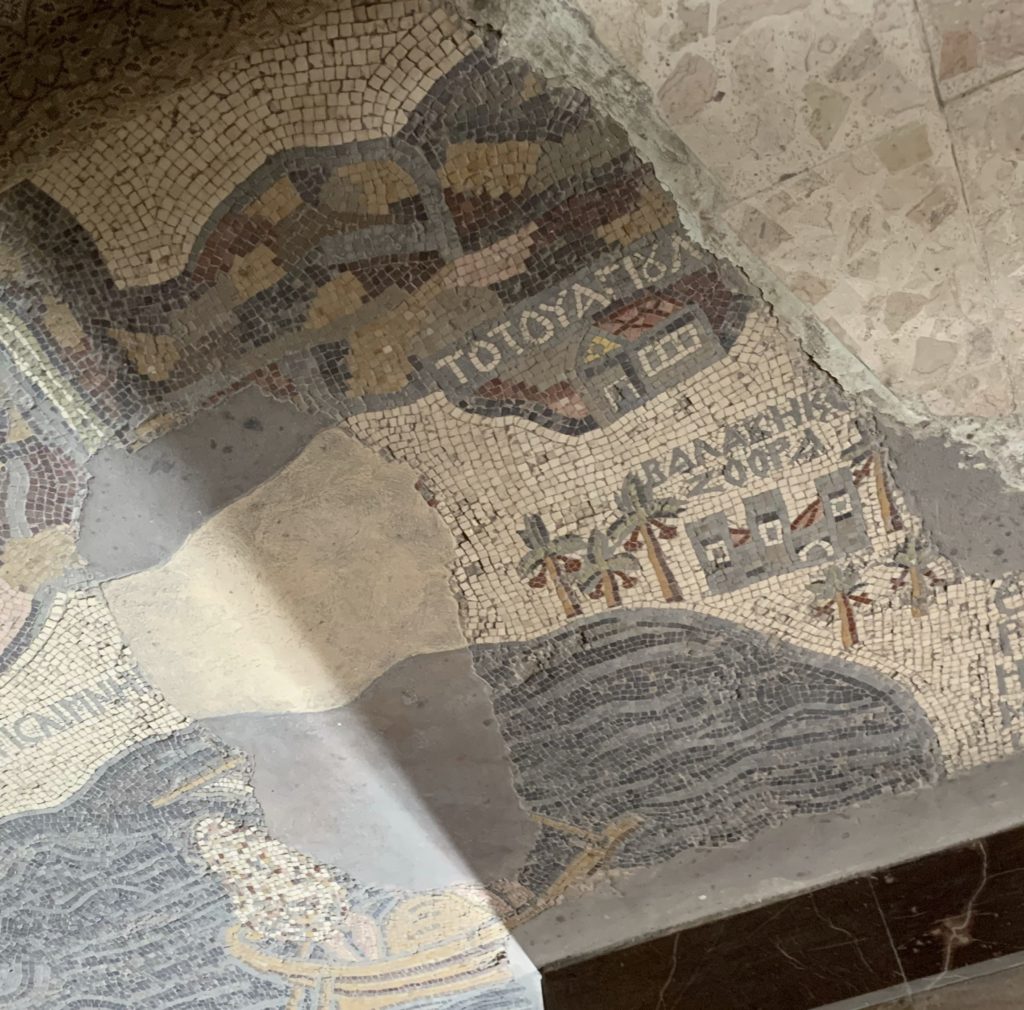
The site of Lot’s Cave sits on a steep mountain slope. Its current Arabic name is Deir ‘Ain ‘Abata (”monastery at the Abata spring”). Burton MacDonald surveyed the area in 1986 and in 1987 Konstantinus Politis continued the survey and started excavating in 1988 with the backing of the British Museum (this series of excavations continued until at least 2003; excavation appears to be continuing, as revealed by comparing what we saw to Creighton University’s photos). In 1991 excavators discovered a 6th–7th century Byzantine church which had been constructed around a natural cave where Lot and his daughters supposedly lived. (see “Jordan,” Bible and Spade 12, no. 3 (Summer 1999): 87–89). Mosaic floors display Greek inscriptions dated to April 606 AD and May 691 AD.
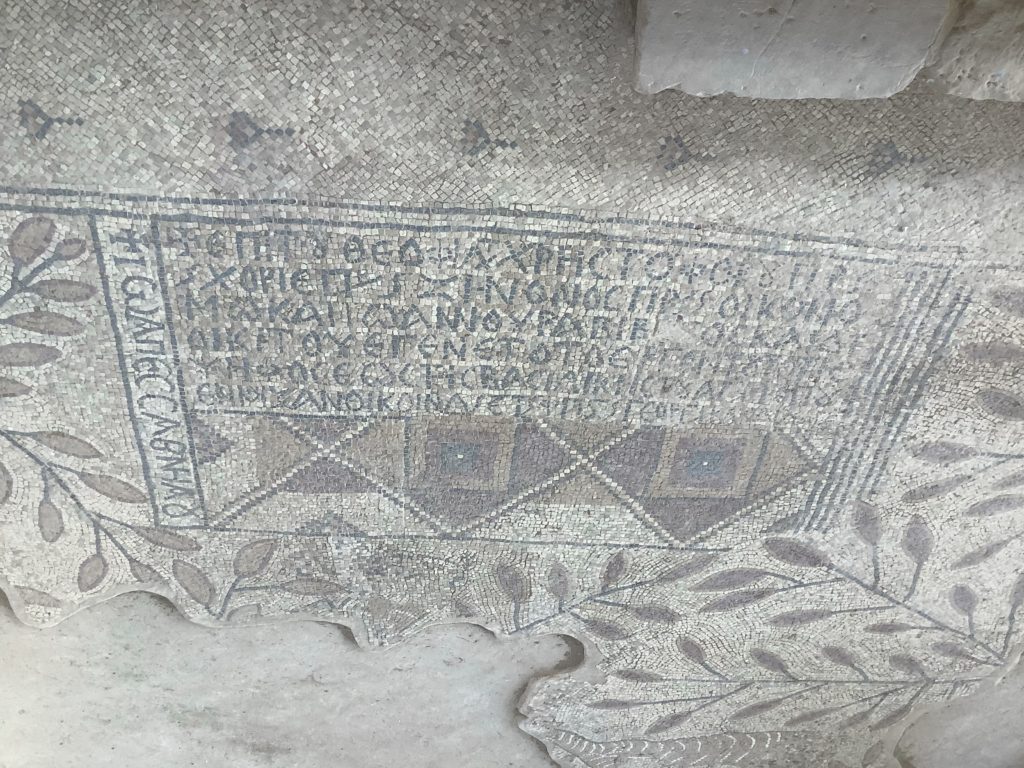
Two other Greek inscriptions on stone ask “Holy Lot” for blessing. The physical evidence dates to the early Byzantine period (ca. 4th–7th centuries AD). Earlier occupation of the site is indicated by Nabataean pottery (1st century BC–1st century AD). Excavators found a fine ceramic chalice and a copper duck-bill axe-head at lower levels of occupational debris. These items belong to the Middle Bronze II (2000–1500 BC). The archaeological teams have also located 18 cairn tombs just north of the monastery grounds, dating also to Middle Bronze II. Some of these could possibly date to the time of Abraham. Excavators also recovered more than a dozen pottery juglets and cups from Early Bronze I (3300–3000 BC) connected with multiple burials.
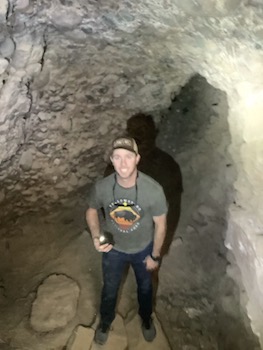
Jordan’s ministry of tourism has established a beautiful museum at the foot of the slope leading up to the Byzantine church ruins at Lot’s Cave. The Dead Sea is just about two miles away to the northwest.

While visiting the museum at Lot’s Cave, we found several displays of particular interest geologically. The first consisted of a ball of sulfur encased in gypsum. According to the museum’s labeling, such sulfur balls have been recovered from the shore of the Dead Sea. The biblical text indicates that the Lord “rained on Sodom and Gomorrah sulfur and fire” (Genesis 19:24 ESV). The following questions remain for geologists to consider: (1) How were the sulfur balls encased in gypsum formed? (2) Could such sulfur balls be the result of divine judgment on Sodom and Gomorrah?
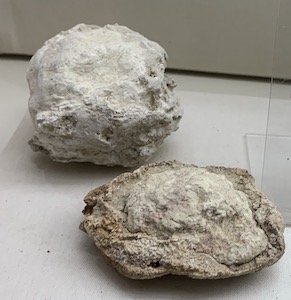
A variety of theories exist concerning the actual physical means by which God destroyed Sodom and Gomorrah. According to Walton, Matthews, and Chavalas,
The natural deposits of bitumen and the sulfurous smell attached to some areas around the Dead Sea combine to provide a lasting memory of Sodom and Gomorrah’s destruction. One can only speculate about the actual manner of this destruction, but perhaps the combustion of natural tars and sulfur deposits and the release of noxious gases during an earthquake are a part of the story (Deut 29:23).
— Victor Harold Matthews, Mark W. Chavalas, and John H. Walton, The IVP Bible Background Commentary: Old Testament, electronic ed. (Downers Grove, IL: InterVarsity Press, 2000), Gen 19:24.
Among the mechanisms to be investigated, volcanic activity must also be considered. The Lot’s Cave museum displays lava retrieved in the area. In addition, the area possesses basalt dikes like the one the trail to Lot’s Cave crosses. If geologists investigate the evidence, they might be able to propose a model fitting both the biblical text and the physical evidence. We must also keep in mind that some of these evidences might not relate to the Genesis 19 destruction, but to a prior or a later event or events.
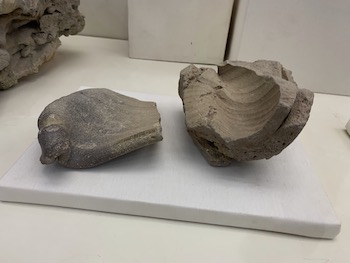
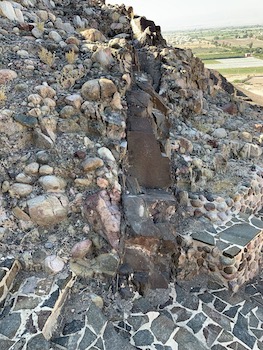
One of the resources for information about Lot’s Cave consists of online reports of the Madain Project. Use this link to access more information about the Madain Project. See also “Lot’s Cave Museum at Ancient Zoar (Zoora),” Bible History Daily (Blog of Biblical Archaeology Society), Feb 17, 2012; and, Konstantinos Politis, “Where Lot’s Daughters Seduced Their Father,” Biblical Archaeology Review 30, no. 1 (January-February 2004): 20–25, 27–30, 64.
